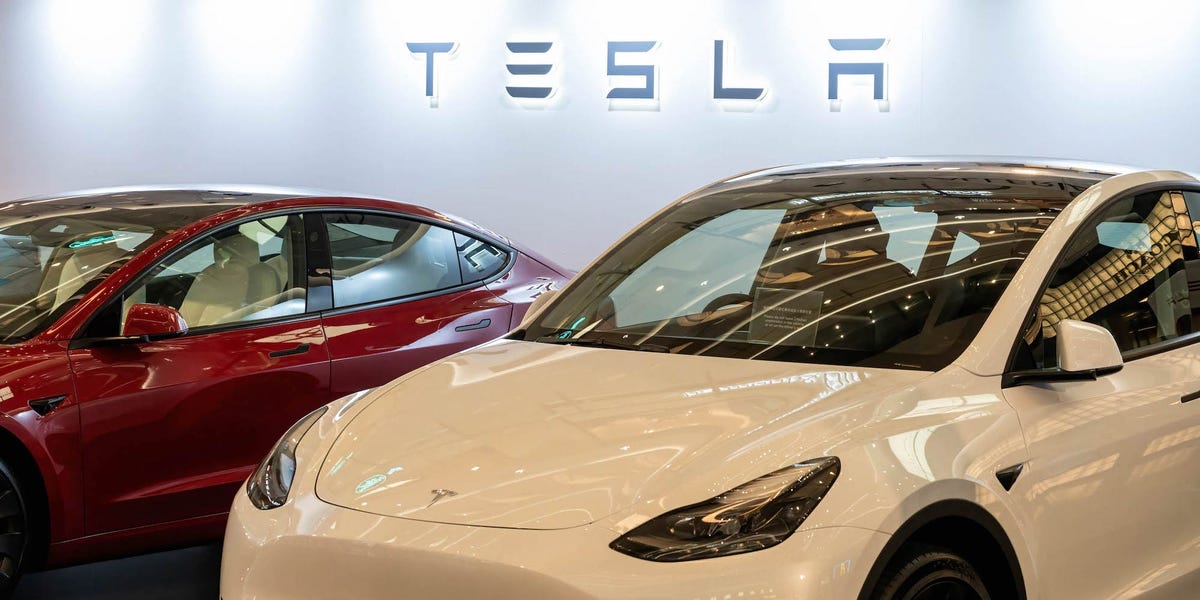Tesla was so swamped with complaints about driving ranges that it created a secret team to cancel owners’ service appointments, source says::To suppress the volume of complaints the automaker created a secret “Diversion Team” in Las Vegas to cancel appointments, Reuters reported.
Instead of displaying the true driving range, the software provided a “rosy” projection of how far cars could drive before needing to be recharged, the report said. The distance EVs can travel before needing to be recharged is one of the main disadvantages the cars face in comparison with gas vehicles. The order to inflate the driving range displayed on the cars was given by Tesla’s CEO Elon Musk around 10 years ago, according to Reuters.
If you know the true answer, but you give your customer a false answer to make your product look better than it is, there’s a word for that. It’s “fraud”.
Which reminds me of Apple and MS and Google and who not too…
Counterpoint: Ive taken numerous road trips in both of our family’s Tesla (Tesli?) as well as a couple loaners, and the built in navigation is always spot on with the estimates. Like it’s eerie how it can predict within a percentage point on a 2 hour or more drive within the first 10 minutes of a trip.
Range anxiety really is only experienced by those that it doesn’t affect (i.e. potential buyers)
It sounds like your talking about you put an address in gps and it gives you an accurate number.
The article is talking about it’s version of a gas gauge, where it says X miles remaining, and that is what’s inflated.
Trying to lie on the gps would cause more complaints as people got stranded, the fraud was lying on the “gas gauge” where it would be hard for a customer to realize they had less juice than they were being told.
The number it gives is based on ideal driving. If it says there’s 200 miles left, no one should be surprised they don’t get 200 miles when they drive 85 on the highway
Except the article is saying that they purposely inflated the number it gives.
The number it gives is based on ideal driving
No, it should be, but it’s not. I’m not going to keep explaining it tho, you should just read the article you’re commenting on.
Then you can email the author and explain how they’re wrong and Elon is amazing. I’m sure they’d love to hear from you.
But it’s addressing the same thing, no? The number it displays is the epa range and any state of charge. I prefer to just show a percentage but either way it’s understood to be an estimate. If you want a true value just enter a destination (you can do a multi leg trip as well)
Also this article is so vague it’s almost useless. I highly doubt this team was just straight up closing service tickets; so more than likely they trained a single team on the talking points of the display number vs real world and thus improved efficiency with service tickets. The article even admits the cars didn’t need any actual service
I said it in another reply but it’s not unlike a phone telling you it has 12 hours remaining, but then you play a graphically intense game and it dies in 2. The margins are much smaller here but the point is still valid
They made the numbers less accurate because people complained real distance per charge isn’t what’s advertised.
I have no idea why so many keep bending over backwards to make fraud seem normal.
But if you’ve read this whole thread and still don’t get it, I don’t think I’m going to keep trying.
Removed by mod
Thanks for taking the time to tell everyone you don’t know what you’re talking about I guess.
Removed by mod
I believe it would be Teslae.
I believe it’s actually Teslapodae since it’s from the Greek
Yes, if the projected range is more optimistic than reality, it’s always because I drive faster than 120-130 kph. Otherwise it’s absolutely spot on or even better than projected, for example if I drive 100-110 kph for a while.
How do you know it’s accurate if you don’t run it to empty?
I’ve had many legs of a trip where we get there under 10%
I also pull data from via a third party app and the historical data confirms the numbers aren’t just made up
Everyone wants to hate on it but it really is a pleasant experience and the only complaint is it doesn’t give you an accurate estimate of miles on the main screen when that is literally impossible without a destination in mind.
Think about it your phone would tell you it had 12 hours of battery left then you played an intense game and it dies in 2 hours… It’s a very similar issue
I think that would be “Teslae” 😉
Huh, I have a Niro EV and it tries pretty hard to extrapolate the range based on the current conditions, so for example if it’s colder outside than the range is less (because it needs to keep the batteries warm), and if you switch on air conditioning or the heater then it immediately lowers the range to account for the extra drain. Occasionally it gets the range prediction wrong, but it really does seem to try to do its best. I just assumed that all EVs work this way.
Niro is from Nissan though. Most reputable manufacturers do produce pretty solid EVs. Tesla is a scam.
Kia makes the Niro, not Nissan.
Ah right. Kia is also more reputable though.
Tesla doesn’t really offer anything to the EV market that other more established makers don’t. Except for poor build quality, panel gaps, and a memelord of a CEO.
In fairness, I am also jealous of their Supercharger network, having had some bad experiences on the very few occasions when I’ve needed a DC fast charge and it seemed like nothing around was working. I hope that it gets upgraded to support CCS in at least some locations so I can start being able to use them.
The superchargers are also stupid, but more so in a regulatory sense. If EVs are to be viable they ought have standardised connectors and methods of charging. Having a private company own that is beyond idiotic.
It is perfectly fine as long as they release the standard and make it unencumbered by licensing, which Tesla has done for NACS. Many standards originally came from companies.
Driving 120km/h on the highway, upwind, uphill, airco usage all decrease your battery more than driving in ideal conditions.
The WLTP is a scam number because ( the way I see it ) it’s how far your car can drive on a perfectly straight piece of road with a slight breeze from behind in the perfect temperature. Conditions which are never met in real life.
In my old diesel car the usage between 120 and 90 km/h on a highway was neglectable. It’s the difference between 5.5/100km and 5.7l/100km.
Driving 90km/h on a highway vs 120 will probably easily make 100km range difference in a Tesla…
There’s a button on the Tesla where you fan see the estimated range based on your current power usage as well as what you’re losing power too ( acceleration/wind/uphill/… ).
I’m not defending it. It’s just not as straightforward because it depends on more than your petrol car.
Tesla model 3 long-range has a WLTP of ~600km. I think the furthest I’d give it is 450-500 in summer and ~ 400-450 in winter ( on a 100% charge). Normally you’d only charge it to 90% to increase battery lifetime unless you’re going on long trips.
Not to mention the power your car loses just standing on your porch…
One thing to note is you didn’t notice a range difference based on speed because you’re dealing with larger numbers in terms all around, but you definitely had the same efficiency loss in percent when going faster
Won’t someone think of the empty tunnel in Vegas? :(
Sorry for party pooping the Tesla hate train, but the milage estimate when navigation is of is directly correlated to battery state of charge. Its basicly just SoC x factor. Its not dynamic, as in a Kia or BMW. The factor is calculated from officoal EPA range test. Should it be dynamic? Maybe, but you get a true estimate when you navigate to a destination anyway. This is probably done so they could market the car with certain range, same as many other manufacturers.
This is demonstrably false. If you get a brand new Tesla and charge it to 100%, the range on the screen will be the EPA range. That’s not a “rosy” prediction, that’s the prediction that companies must legally use in their sales material in the US.
Also, the BI article says this was 10 years ago, but the Reuters article opens talking about the Model 3, which was only released 5 years ago. But it’s coming from an unnamed source who claims it was a decade ago - not exactly reliable.





